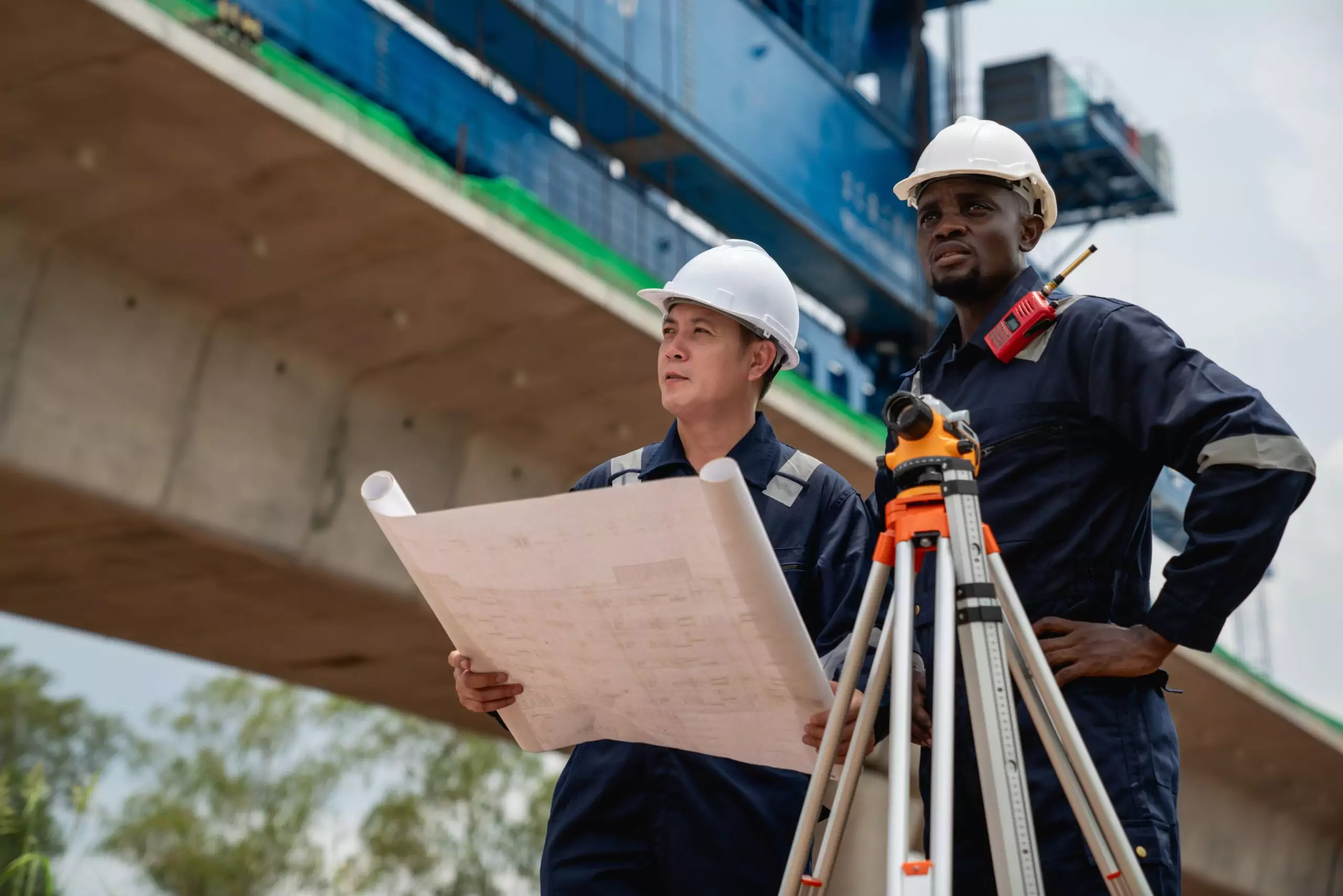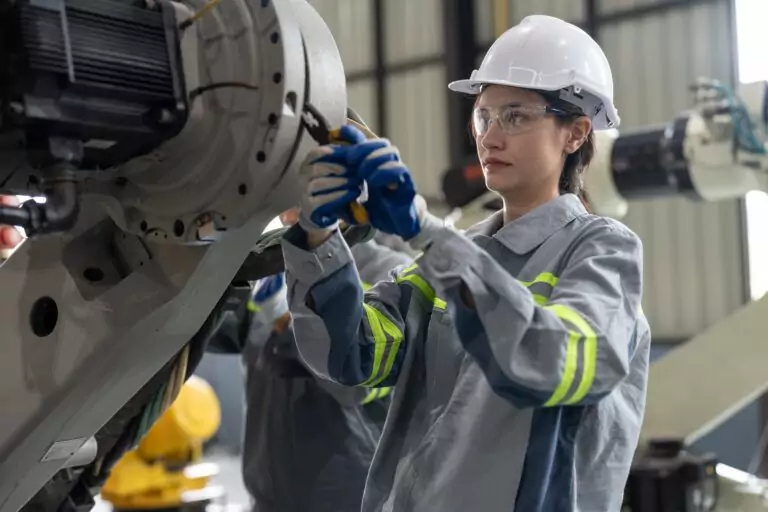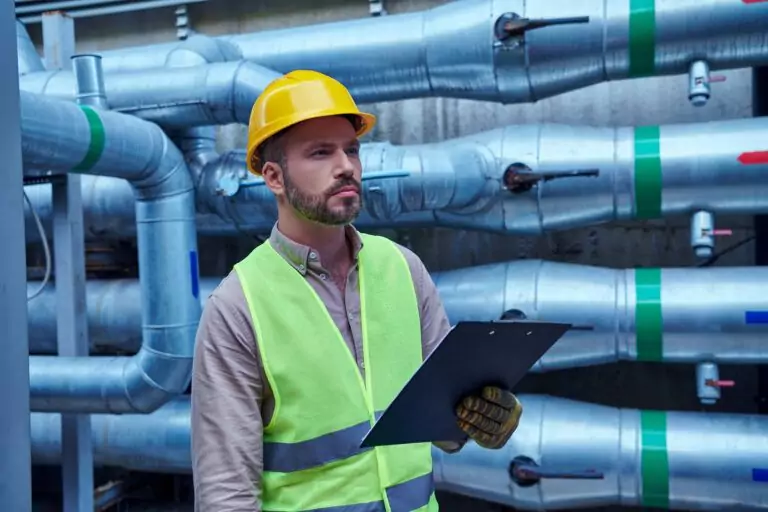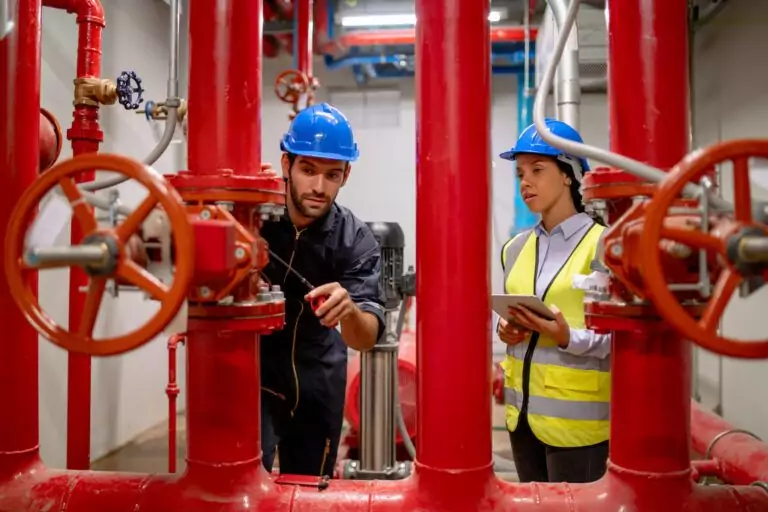Navigating the evolving landscape of the job market can be a daunting task, especially for civil and structural engineers who find themselves at the intersection of traditional practices and cutting-edge innovations. This article delves into the current trends, essential skills, and future prospects within the civil and structural engineering sectors, offering insights into how these professionals can thrive amidst the changing demands. From the surge in infrastructure projects globally to the increasing emphasis on sustainable and green designs, the engineering field is witnessing significant transformations.
Furthermore, we explore the industries actively seeking these engineers, the geographical hotspots brimming with opportunities, and the salary trends that reflect the value of specialised skills in this dynamic job market. As we look ahead, understanding the impact of technological advancements and the shift towards climate resilience becomes crucial for engineers aiming to lead in their field. Join us as we unpack these trends and explore how they can shape your next civil and structural engineering role in the evolving industry landscape.
How Has Demand Changed Recently?
In recent years, the landscape of demand across various sectors has undergone significant shifts, influenced by a confluence of factors that include technological advancements, changes in consumer behaviour, and global economic dynamics. The advent of digital technology and e-commerce has particularly revolutionised how consumers access products and services, leading to an increased demand for online shopping, digital content, and remote services. This digital shift has been accelerated by the COVID-19 pandemic, which forced many consumers and businesses to adapt to online platforms for buying, selling, and engaging in services, further entrenching digital habits.
Concurrently, there has been a growing consciousness around sustainability and ethical consumption, driving demand towards eco-friendly and socially responsible products. This shift is reflective of a broader societal move towards environmental stewardship and a preference for brands that align with these values. As a result, companies across industries are increasingly integrating sustainable practices into their operations and product lines to meet this evolving consumer demand.
Moreover, the global economic environment, characterised by fluctuations in market conditions, trade tensions, and, most recently, the impacts of the pandemic, has also played a crucial role in shaping demand. Economic uncertainties have led to changes in consumer spending habits, with many prioritising essential goods and services and becoming more price-sensitive. This has prompted businesses to adjust their offerings and pricing strategies to cater to the changing economic landscape and consumer expectations.
In the realm of technology and innovation, demand has surged for advanced technologies, including artificial intelligence (AI), the Internet of Things (IoT), and renewable energy solutions. This is largely driven by the need for efficiency, enhanced connectivity, and sustainable development goals. Industries are leveraging these technologies to innovate and create value-added services and products, responding to the growing demand for smart and green solutions.
Understanding these shifts in demand is crucial for businesses and policymakers alike, as it enables them to anticipate market trends and align their strategies accordingly. The dynamic nature of demand underscores the importance of agility and responsiveness to external changes, highlighting the need for continuous adaptation and innovation to meet the evolving needs and preferences of consumers and the global market at large.
Increase in Infrastructure Projects Globally
The world is witnessing a significant increase in infrastructure projects, driven by the dual aims of stimulating economic growth and enhancing global connectivity. This growth encompasses a wide array of initiatives, including the expansion of transportation networks, the development of smart cities, and the modernisation of digital infrastructure. These efforts are not only aimed at creating a more interconnected world but also at addressing the pressing needs of a growing global population.
The commitment to infrastructure development reflects a broad consensus on its critical role in fostering sustainable development and building economic resilience, with both governments and private sectors making substantial investments in future-ready projects.
Emphasis on Sustainable and Green Designs
In tandem with the rise in infrastructure projects, there has been a marked shift towards sustainable and green designs. This shift signifies a deepening awareness of environmental responsibilities and the urgent need to combat climate change. Sustainable infrastructure is characterised by energy efficiency, the minimisation of waste, and the utilisation of renewable resources, aiming to strike a balance between development and environmental conservation.
These projects are designed with resilience in mind, ensuring that they can withstand various environmental challenges and serve communities sustainably over the long term. The focus on green designs is not only an ethical choice but also an economically strategic one, as it often results in significant cost savings and enhances the durability of infrastructure assets. This emphasis on sustainability represents a crucial step forward in aligning infrastructure development with the goals of environmental stewardship and long-term sustainability.
Important Skills for These Engineers
Civil and structural engineers today are at the forefront of designing the future, necessitating a skill set that is both broad and specialised.
Engineers who can navigate the complexities of these projects contribute significantly to the advancement of sustainable energy solutions. In essence, the modern civil and structural engineer must be a blend of a technical virtuoso and an environmental steward, equipped with a skill set that bridges traditional engineering expertise and the demands of a sustainable future.
Advanced Software Tools Proficiency
Proficiency in advanced software tools is essential for civil and structural engineers. Mastery of BIM (Building Information Modeling), AutoCAD, and Revit enables these professionals to execute precise and efficient design, simulation, and data management, which are critical for the success of modern engineering projects.
BIM, AutoCAD, Revit
These tools are at the forefront of engineering design and project management. BIM revolutionises project visualisation and collaboration, AutoCAD is foundational for creating accurate 2D and 3D designs, and Revit enhances BIM workflows with its powerful modelling capabilities.
Sustainable Design Knowledge
In today’s engineering landscape, sustainable design knowledge is not just preferred, it’s imperative. Engineers equipped with this expertise can lead projects that are not only innovative but also minimise environmental impact, embodying the principles of sustainability in every design decision.
LEED Certification Understanding
Understanding LEED Certification processes is crucial for engineers committed to the green building movement. This knowledge ensures that projects not only meet but exceed standards of sustainability and energy efficiency, setting a benchmark in environmentally responsible construction.
Renewable Energy Project Skills
Expertise in renewable energy projects, including solar, wind, and hydroelectric, is increasingly in demand. Engineers with skills in these areas are vital contributors to the global transition towards sustainable energy, addressing critical environmental and energy challenges with innovative solutions.
Industries Hiring These Engineers
Civil and structural engineers are sought after in a variety of industries, each valuing the unique skills and expertise these professionals bring. This diverse demand across sectors underscores the versatility of civil and structural engineers and their pivotal role in shaping the future of our built environment and natural world.
Construction and Building Services
The construction and building services sector stands as a pivotal arena for civil and structural engineers, especially those working in structural engineering, where they plan, design, and oversee the construction of both commercial and residential buildings. Their expertise ensures that these structures adhere to the highest standards of safety, functionality, and regulatory compliance.
Commercial and Residential Projects
Focusing on commercial and residential projects, engineers apply their extensive knowledge to a variety of structures, including office buildings, skyscrapers, homes, and apartment complexes. Their role is critical in shaping environments that meet the diverse needs of businesses and communities.
Government and Public Works
Within government and public works, civil and structural engineers are instrumental in developing the infrastructure that underpins society. Their work encompasses a broad array of public assets, including roads, bridges, dams, and water treatment systems, which are essential for societal welfare and economic stability.
Infrastructure and Transportation Projects
Infrastructure and transportation projects represent a significant area of employment, where engineers design and implement systems to enhance connectivity. Their contributions to highways, railways, airports, and ports are vital in facilitating efficient transport and bolstering economic growth.
Environmental and Green Energy Sectors
The environmental and green energy sectors are increasingly reliant on the innovative capabilities of engineers to advance sustainable solutions. Through renewable energy projects, including solar, wind, and hydroelectric power, engineers are at the forefront of the transition to greener, more sustainable energy alternatives.
Sustainable Development Projects
Sustainable development projects underscore the modern engineering commitment to future generations. Civil and structural engineers are key players in creating resilient, sustainable infrastructure that addresses today’s needs while conserving resources for the future, highlighting the critical role of sustainability in engineering practices.
Geographical Hotspots for Jobs
The job landscape for civil and structural engineers is significantly shaped by geographical factors, with urban areas and developing regions standing out as key hotspots. These areas are bustling with opportunities, fueled by a continuous need for new infrastructure, modernisation of existing facilities, and the drive towards sustainable development. Cities undergoing rapid expansion are especially ripe with potential, necessitating innovative planning and engineering solutions to support their growth.
Moreover, countries investing heavily in public works projects, particularly those focused on renewable energy and advanced transportation networks, are actively seeking skilled engineers. These geographical hotspots not only offer vibrant career opportunities but also the chance for engineers to contribute significantly to the development and sustainability of communities on a global scale.
Urban and Developing Areas
Urban and developing areas stand at the forefront of demand for civil and structural engineers. These regions, characterised by their dynamic infrastructure needs and modernisation efforts, offer fertile ground for the application of innovative engineering solutions. The growth and evolution of urban landscapes here provide ample opportunities for engineers to contribute to sustainable and impactful projects.
Cities with Rapid Expansion
In cities with rapid expansion, the challenges of accommodating growing populations and ensuring sustainable development create a high demand for skilled engineers. These urban centres require efficient transportation systems, resilient infrastructure, and thoughtful urban planning, making them prime locations for engineers seeking to make a significant impact.
Regions with Infrastructure Investment
Regions experiencing significant infrastructure investment are key employment hotspots for engineers. These investments, aimed at enhancing transportation networks, upgrading water and waste management systems, and improving energy infrastructure, necessitate the expertise of dedicated professionals to lead and execute transformative projects.
Countries with Significant Public Works Projects
Countries embarking on significant public works projects represent a global call for civil and structural engineers. Whether it’s through renewable energy initiatives, large-scale transportation overhauls, or innovative urban development projects, these countries rely on the specialised skills of engineers to advance towards a more sustainable and efficiently connected future.
Salary Trends for These Engineers
Salary trends for civil and structural engineers are shaped by a constellation of factors, notably experience level, geographical location, industry, and project type.
Overall, the salary landscape offers a positive outlook for engineers who continuously refine their skill sets and align their expertise with the evolving demands of the job market.
Factors Influencing Salary
Several crucial factors significantly dictate the salary landscape for civil and structural engineers. Notably, experience level and geographical location emerge as primary influencers. Engineers boasting a rich experience and those stationed in urban or rapidly developing regions typically see higher earnings, attributed to the complexity and scale of projects in these areas.
Experience Level and Location
The synergy between an engineer’s experience level and their operational location plays a critical role in shaping their salary. Veterans in the field, possessing a substantial track record of successful projects, command higher salaries, particularly in high-demand urban centres or areas marked by significant infrastructural growth.
Industry and Project Type
The industry sector and specific types of projects an engineer engages with also have a profound impact on salary scales. Specialising in high-demand areas, such as renewable energy, sustainable development, and advanced infrastructure projects, can lead to enhanced compensation, mirroring the escalating demand for specialised skills in these fields.
Future Trends Affecting the Job Market
The job market for civil and structural engineers is on the cusp of significant change, driven by a series of future trends. This evolution opens up fresh opportunities for engineers to lead in the development of innovative, tech-driven solutions. These trends not only indicate a shift in the nature of engineering projects but also emphasise the critical role of continuous learning and adaptation. Engineers must stay abreast of new technologies and methodologies to remain relevant and competitive in the evolving job market.
Technological Advancements in Construction
Technological advancements are revolutionising the construction sector, ushering in a new era of efficiency and innovation. These developments require engineers to continuously update their skills to stay at the forefront of the industry.
3D Printing and Modular Construction
3D printing and modular construction represent cutting-edge methods that streamline the building process. These technologies not only accelerate construction timelines but also promote environmental sustainability by minimising waste and reducing the carbon footprint.
Climate Resilience in Infrastructure
The emphasis on climate resilience within infrastructure projects underscores the need for structures that can withstand environmental pressures. Engineers are increasingly focused on designing adaptable and robust systems to combat climate-related challenges.
Flood Defence and Earthquake-Proofing
Specialised knowledge in flood defence and earthquake-proofing is becoming indispensable, as these measures are critical for safeguarding communities and ensuring the durability of infrastructure in the face of natural disasters.
Expansion of Smart City Projects
The expansion of smart city projects signals a move towards interconnected and technologically advanced urban spaces. Engineers are central to this transformation, integrating smart technologies to improve the quality of urban life.
IoT Integration in Urban Planning
IoT integration in urban planning is redefining city infrastructure, making it smarter and more responsive. The role of engineers in embedding IoT solutions into urban design is key to achieving more efficient and livable cities.
Building Forward with Innovation and Insight
The job market for civil and structural engineers is evolving rapidly, shaped by global infrastructure demands, green building priorities, and advances in technology. This article has explored the rising importance of software proficiency, sustainability knowledge, and geographical and industry-specific trends that are redefining the profession. Engineers who embrace continuous learning and adapt to new challenges are well-positioned to lead the future of resilient, intelligent infrastructure.
At Vista Projects, we support that evolution with integrated engineeringThe process of integrated engineering involves multiple engineering disciplines working in conjunction with other project disciplines to e... solutions tailored to complex infrastructure and industrial projects. Our multidisciplinary teams bring clarity and quality to every phase of development, from design to implementation.
Looking to shape the next generation of sustainable infrastructure? Partner with Vista Projects and bring your engineering expertise to life on projects that matter.









